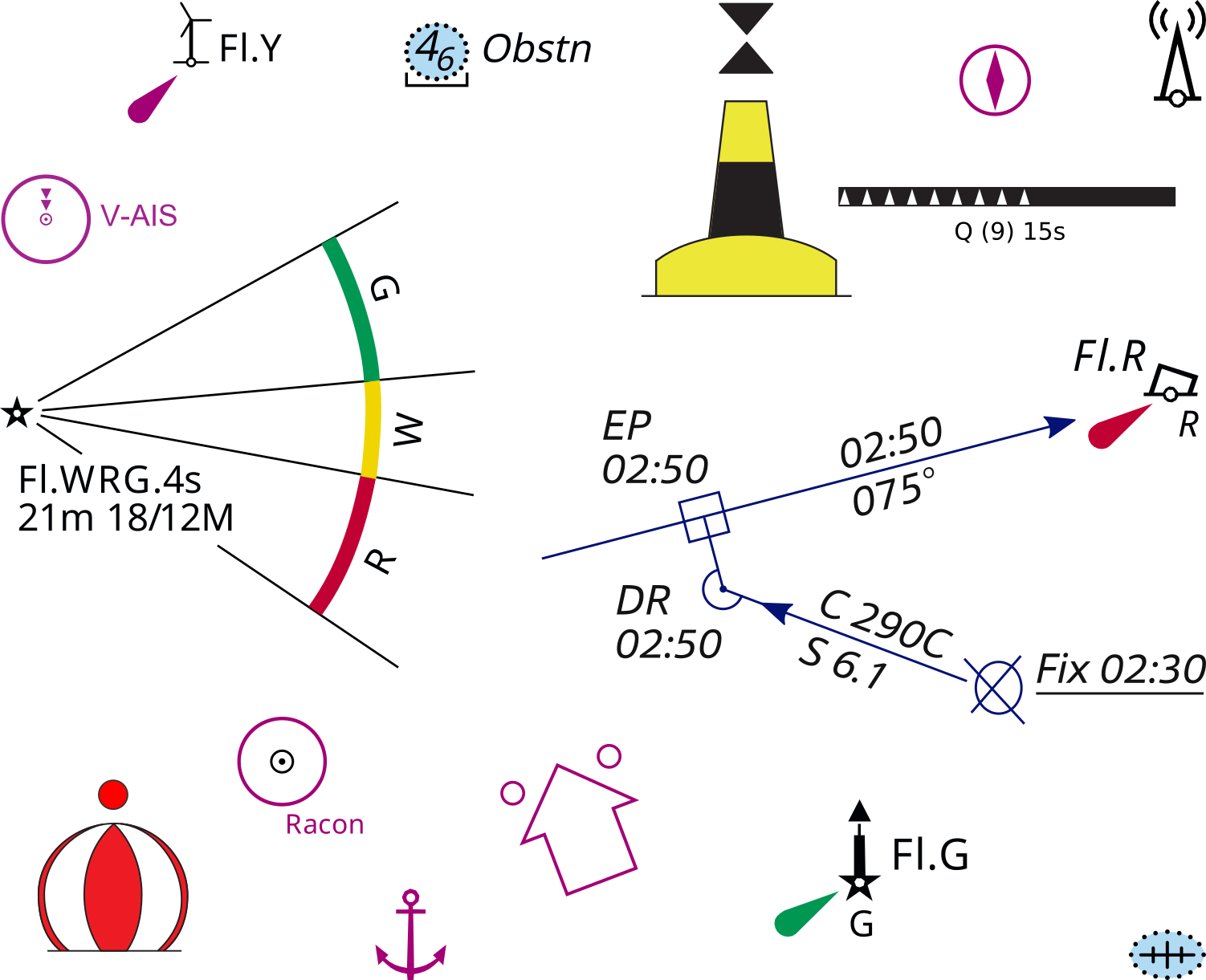Navigation course
This is an advanced online course on marine navigation, providing you with the “conditio sine qua non” for offshore and coastal sailing.
Although most yachtspersons tend to depend on chart plotters, GPS / Galileo or Radar to navigate them through hazardous waters, such reliance on electronics is unnecessary and inherently dangerous.
Furthermore, the act of navigating by yourself is tremendous fun and fullfilling, like in Greece or Turkey; both ideal cruising areas where you can perfect your sailing skills..
What is navigation?
The phrase “navigare necesse est, vivere non est necesse” – to sail is vital, to live is not; Plutarch – demonstrates the intertwined origin of both “sailing” and “navigating”.
To sail, i.e. to travel over water in a ship, is the original definition of navigation and in many languages still is.
A further but modern definition ressembles orientation or wayfinding:
“the science and art of planning, recording and directing the course of vessels as they sail”;
preferably by using only nautical charts, a log, a compass and your common sense. Satellite navigation should not be the “conditio”, yet rather treated as a supplementary.
Goal of this navigation course
The aim of this course is to teach you how to navigate safely while using the minimum of resources: methods that have been in use since the Middle Ages, and are still applied by the professionals
You will find that this book greatly extends on – for instance – the ASA and RYA courses, which is possible since the classes offered by these national yachting associations need to be simplified in order to allow everyone to pass their exams, regardless of education level.
Therefore this course is able to be more in-depth, offering you the insights and confidence to become a seasoned navigator.
You won't be relying on shallow rules of thumb, instead you will comprehend and appreciate the underlying physics and principles. Self-reliance is vital.
Enjoy!
Click on the links below to study the chapters,
also you can download the
exercises + answers PDF ![]() with crystal clear illustrations, clarifying all the key aspects of coastal navigation.
with crystal clear illustrations, clarifying all the key aspects of coastal navigation.
Chapters navigation course
- PositionsPositions
- Nautical chartNautical chart
- CompassCompass
- Plotting and pilotingPlotting and piloting
- Advanced pilotingAdvanced piloting
- Astronomical origin of tidesAstronomical origin of tides
- Tides and tidal height predictionTides and tidal height prediction
- Tidal streams and currents Tidal streams and currents
- Aids to navigationAids to navigation
- Lights and shapesLights and shapes
- Math – Running fixesMath – Running fixes
- Math – Distance of horizonMath – Distance of horizon
- Math – Vertical sextant anglesMath – Vertical sextant angles
- Compass deviation tableCompass deviation table
- Luminous range diagramLuminous range diagram
- Geographic range table
Other resources

Orientation
Navigation is closely connected to orientation, considering that the verb “to orient / orientate” is derived from the Latin oriens, meaning “rising” (of the Sun), i.e. the east.
The noun “orientation” thus means being aware of your surroundings (see Pilotage, Chapter 4Pilotage, Chapter 4 Pilotage) and getting your bearings by identifying which direction is east: sunrise.
Interestingly, in religious context “to orientate / orient” means directing yourself towards Mekka or Jerusalem. In fact churches are built on a west – east axis with the altar “ad orientem”; in the eastward direction (of prayer).